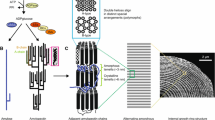Summary
The zygote of cotton (Gossypium hirsutum) remains undivided for approximately \(2{\mathbf{\raise.5ex\hbox{$\scriptstyle 1$}\kern-.1em/ \kern-.15em\lower.25ex\hbox{$\scriptstyle 2$} }}\) days following fertilization. The changes which occur during this period can be divided into two stages. During stage 1 the zygote decreases in volume so that its volume becomes one half that of the egg. Correlated with this change a number of alterations occur in the endoplasmic reticulum (ER) numerous enlargements form; it becomes closely associated with the plasma membrane; and an internal network of tubes appears in it. The plastids and mitochondria become grouped around the zygote nucleus. The ribosomes form large, helical polysomes which are arranged as shells around the plastids and mitochondria. Starch accumulation and wall formation over the chalazal end of the cell, which begins during the end of stage 1, continues during stage 2. A new set of ribosomes appear in the cytoplasm. These either remain single, or aggregate into small polysomes. The large, helical polysomes of stage 1 persist. Ultimately the zygote becomes a highly polarized cell, rich in starch, surrounded by a wall, filled with a tube containing ER, and two types of polysomes, one composed of ribosomes present in the egg and the other of ribosomes produced by the zygote nucleus.
Similar content being viewed by others
References
Balls, W. L.: The sexuality of cotton. Yearbook, Khedivial Agric. Soc., Cairo 1905, p. 199–222.
Gore, U. R.: Development of the female gametophyte and embryo in cotton. Amer. J. Bot. 19, 795–807 (1932).
Jensen, W. A.: Botanical histochemistry. San Francisco: Freeman 1962.
—: The ultrastructure and composition of the egg and central cell of cotton. Amer. J. Bot. 52, 781–797 (1965).
Jensen, W. A.: Cotton embryogenesis: The tube containing ER. J. Ultrastruct. Res. (in press) (1968a).
Jensen, W. A.: Cotton embryogenesis: Polysome formation in the zygote. J. Cell Biol. (in press) (1968b).
—: Cotton embryogenesis: Entrance and discharge of the pollen tube into the embryo sac. Planta (Berl.) 58, 158–183 (1968).
Jensen, W. A., and D. B. Fisher: Cotton embryogenesis: Double fertilization. Phytomorphology (in press) (1968).
Maheshwari, P.: An introduction to the embryology of angiosperms. New York: McGraw-Hill 1950.
Ryczkowski, M.: Physico-chemical properties of the central vacuolar sap in developing ovules. In: Pollen, physiology and fertilization (H. F. Linskens, ed.), p. 17–25. Amsterdam: North Holland Publ. Co. 1964.
Schulz, R., and W. A. Jensen: Capsella embryogenesis: The egg, zygote, and early embryo. Amer. J. Bot. submitted 1968.
Author information
Authors and Affiliations
Rights and permissions
About this article
Cite this article
Jensen, W.A. Cotton embryogenesis: The zygote. Planta 79, 346–366 (1968). https://doi.org/10.1007/BF00386917
Received:
Issue Date:
DOI: https://doi.org/10.1007/BF00386917




